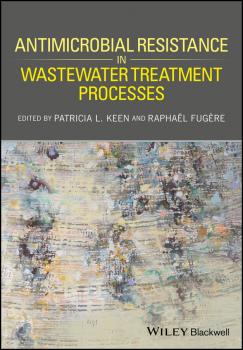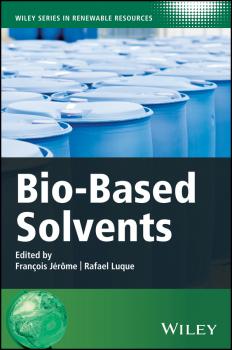ТОП просматриваемых книг сайта:
ЛИТМИР - LITMIR.BIZ - Электронная библиотека
Скачивание или чтение онлайн электронных книг.Аннотация
A concise, pocket-sized, A-Z rapid reference handbook on all the essential areas of mental health nursing, aimed at nursing students and newly qualified practitioners. Covers a broad range of mental health disorders, approaches interventions and conditions Easy to locate practical information quickly in a pocket sized, rapid reference format The topics and structure are mapped on to the NMC’s (2010) Standards for Pre-registration Nursing Education and their required essential skills and knowledge.
Аннотация
Equine Color Genetics, Fourth Edition presents a detailed examination of the color variation in horses and donkeys and the genetic mechanisms that produce color variations. Thoroughly covers the basic colors in horses, including bay, chestnut, black, and brown Details the genetic basis of the colors built from the basic coat color, including dilutions and white patterning Provides an explanation of genetic mechanisms that determine coat color Presents a thorough revision and update, including new advances in molecular genetics, biochemistry, molecular mechanisms, genetic loci, coat colors before domestication, and more Offers a new introduction describing the principles of genetics and genomics research to help outline how knowledge is discovered and to assist the reader in understanding concepts covered in the book
Аннотация
The book provides a comprehensive and easily accessible reference source covering all important aspects of particle adhesion and removal. The core objective is to cover both fundamental and applied aspects of particle adhesion and removal with emphasis on recent developments. Among the topics to be covered include: 1. Fundamentals of surface forces in particle adhesion and removal. 2. Mechanisms of particle adhesion and removal. 3. Experimental methods (e.g. AFM, SFA,SFM,IFM, etc.) to understand particle-particle and particle-substrate interactions. 4. Mechanics of adhesion of micro- and nanoscale particles. 5. Various factors affecting particle adhesion to a variety of substrates. 6. Surface modification techniques to modulate particle adhesion. 7. Various cleaning methods (both wet & dry) for particle removal. 8. Relevance of particle adhesion in a host of technologies ranging from simple to ultra-sophisticated.
Аннотация
Antimicrobial resistance is arguably the greatest threat to worldwide human health. This book evaluates the roles of human water use, treatment and conservation in the development and spread of antimicrobial resistance. Designed as a companion volume to Antimicrobial Resistance in the Environment (Wiley-Blackwell, 2012), this book is a multi-disciplinary synthesis of topics related to antimicrobial resistance and wastewater treatment processes. Antimicrobial Resistance in Wastewater Treatment Processes assembles detailed discussions written by many of the world's best-known experts in microbiology, civil engineering, chemistry, environmental science, public health and related fields. The book presents a collection of subjects that includes: Current knowledge of the role of the environment in development and spread of antimicrobial resistance Chemical analysis of antibiotics in environmental samples Molecular methods for analysis of antimicrobial resistance genes Advanced wastewater treatment processes and antimicrobial resistance effects Public perception of risk related to health consequences of antimicrobial resistance Public health implications of antimicrobial resistance with focus on wastewater treatment processes Antimicrobial resistance has gained a foothold in the global consciousness as a serious public health threat. There is a much greater appreciation for the role of the environment in the dissemination of antimicrobial resistance and the effects of pollutants that can potentially promote development of resistance in bacteria. Contaminants released from wastewater treatment plants are a concern. In Antimicrobial Resistance in Wastewater Treatment Processes, readers will be guided through examinations of the current science related to this important health issue.
Аннотация
A comprehensive compendium of all commonly used antibiotics, including indications, side effects, dosage information, and drug/food interactions Antibiotics Manual: A Guide to Commonly Used Antimicrobials, Second Edition is a unique, user-friendly guide made for all who prescribe antibiotics. It’s the only book available that takes a 100% drug-listed approach to 200 of the most common antibiotics prescribed to patients each day. Presented in full color, it’s also a convenient reference for every clinician to consult once the decision to use a particular antibiotic has been reached. This edition of Antibiotics Manual includes newer antibiotics that have been released since the publication of the First Edition and updates prescribing information for the older antibiotics. This all-new Second Edition: Has a color-coded interior design which provides quick and easy point of care access for the user Includes 200 of the most commonly prescribed antibiotics, listed by both brand and generic names Features important recently-released antibiotics such as ceftaroline, tedizolid, and bedaquiline Antibiotics Manual: A Guide to Commonly Used Antimicrobials, Second Edition is a welcome book for physicians in all specialties of medicine who prescribe antibiotics. It is also a handy tool for pharmacists, nurses, nurse practitioners, and physician assistants who want more information on the drugs they administer.
Аннотация
A multidisciplinary overview of bio-derived solvent applications, life cycle analysis, and strategies required for industrial commercialization This book provides the first and only comprehensive review of the state-of-the-science in bio-derived solvents. Drawing on their own pioneering work in the field, as well as an exhaustive survey of the world literature on the subject, the authors cover all the bases—from bio-derived solvent applications to life cycle analysis to strategies for industrial commercialization—for researchers and professional chemists working across a range of industries. In the increasingly critical area of sustainable chemistry, the search for new and better green solvents has become a top priority. Thanks to their renewability, biodegradability and low toxicity, as well as their potential to promote advantageous organic reactions, green solvents offer the promise of significantly reducing the pernicious effects of chemical processes on human health and the environment. Following an overview of the current solvents markets and the challenges and opportunities presented by bio-derived solvents, a series of dedicated chapters cover all significant classes of solvent arranged by origin and/or chemical structure. Throughout, real-world examples are used to help demonstrate the various advantages, drawbacks, and limitations of each class of solvent. Topics covered include: The commercial potential of various renewably sourced solvents, such as glycerol The various advantages and disadvantages of bio-derived versus petroleum-based solvents Renewably-sourced and waste-derived solvents in the design of eco-efficient processes Life cycle assessment and predictive methods for bio-based solvents Industrial and commercial viability of bio-based solvents now and in the years ahead Potential and limitations of methodologies involving bio-derived solvents New developments and emerging trends in the field and the shape of things to come Considering the vast potential for new and better products suggested by recent developments in this exciting field, Bio-Based Solvents will be a welcome resource among students and researchers in catalysis, organic synthesis, electrochemistry, and pharmaceuticals, as well as industrial chemists involved in manufacturing processes and formulation, and policy makers.
Аннотация
New contributions to the cyclic plasticity of engineering materials Written by leading experts in the field, this book provides an authoritative and comprehensive introduction to cyclic plasticity of metals, polymers, composites and shape memory alloys. Each chapter is devoted to fundamentals of cyclic plasticity or to one of the major classes of materials, thereby providing a wide coverage of the field. The book deals with experimental observations on metals, composites, polymers and shape memory alloys, and the corresponding cyclic plasticity models for metals, polymers, particle reinforced metal matrix composites and shape memory alloys. Also, the thermo-mechanical coupled cyclic plasticity models are discussed for metals and shape memory alloys. Key features: Provides a comprehensive introduction to cyclic plasticity Presents Macroscopic and microscopic observations on the ratchetting of different materials Establishes cyclic plasticity constitutive models for different materials. Analysis of cyclic plasticity in engineering structures. This book is an important reference for students, practicing engineers and researchers who study cyclic plasticity in the areas of mechanical, civil, nuclear, and aerospace engineering as well as materials science.
Аннотация
This book provides a comprehensive introduction to multiple-point geostatistics, where spatial continuity is described using training images. Multiple-point geostatistics aims at bridging the gap between physical modelling/realism and spatio-temporal stochastic modelling. The book provides an overview of this new field in three parts. Part I presents a conceptual comparison between traditional random function theory and stochastic modelling based on training images, where random function theory is not always used. Part II covers in detail various algorithms and methodologies starting from basic building blocks in statistical science and computer science. Concepts such as non-stationary and multi-variate modeling, consistency between data and model, the construction of training images and inverse modelling are treated. Part III covers three example application areas, namely, reservoir modelling, mineral resources modelling and climate model downscaling. This book will be an invaluable reference for students, researchers and practitioners of all areas of the Earth Sciences where forecasting based on spatio-temporal data is performed.
Аннотация
A one-stop guide to transformer ageing, presenting industrially relevant state-of-the-art diagnostic techniques backed by extensive research data Offers a comprehensive coverage of transformer ageing topics including insulation materials, condition monitoring and diagnostic techniques Features chapters on smart transformer monitoring frameworks, transformer life estimation and biodegradable oil Highlights industrially relevant techniques adopted in electricity utilities, backed by extensive research
Аннотация
Combining both fundamental principles and real-life applications in a single volume, this book discusses the latest research results in ferroelectrics, including many new ferroelectric materials for the latest technologies, such as capacitors, transducers and memories. The first two chapters introduce dielectrics and microscopic materials properties, while the following chapter discusses pyroelectricity and piezoelectricity. The larger part of the text is devoted to ferroelectricity and ferroelectric ceramics, with not only their fundamentals but also applications discussed. The book concludes with a look at the future for laser printed materials and applications. With over 600 references to recent publications on piezoelectric and ferroelectric materials, this is an invaluable reference for physicists, materials scientists and engineers.










